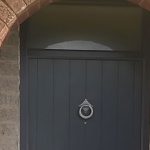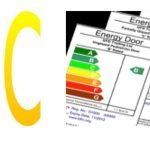Are Composite Doors thermally efficient

Your Composite Door Questions Answered:
Are Composite Doors thermally efficient?
We do not see many and some would say we do not see any – Headlines that is, that say “Energy prices are coming down” – unfortunately as each successive winter comes and goes energy prices only go one way so anything that can be done to retain heat in the home has to be a massive positive for all of us.
What about our front door we all know that it is there to allow access into a property and requires to be strong, secure, durable and, resistant to weather, preferably brightly coloured stylish and attractive to the eye, but thermal efficiency is not something we would normally consider when purchasing a new front door. As your old and warped draughty front door can if we believe some of the “quoted statistics” lose up to 11% of your homes heat loss through draughts at doors and windows there is clearly a huge benefit in having thermally efficient doors – they may not eliminate all of your heat loss but they certainly will help, and as one of our major supermarket chains keeps reminding us “every little helps!”
A recent Department of Energy and Climate Change (DECC) study advised that, insulated doors are the third most cost-effective Energy-saving home improvement that it is possible to make, a replacement boiler and cavity wall insulation filling the first two places. Current legislation requires that all new doors sold and fitted in England & Wales must have a “U” value not exceeding 1.8W/m2K and the lower level of (1.6W/m2K applying in Scotland). The U-value of a door is a measurement of its energy efficiency, the lower the value the more energy efficient it will be, the rating will be influenced by its glazing content but as most glazed panels are a either double or triple glazed this is greatly assisting the efficiency rating.
A modern Composite door is generally at least 44mm thick which is a minimum of 6mm thicker than most front doors and it will have a core of either CFC-free insulating polyurethane (PU) foam or laminated hardwood core both of which provide excellent thermal insulation add to this factory installed draught proofing and the previously noted minimum double glazing and it becomes obvious why Composite doors are considered thermally efficient.
Over recent years determining how thermally efficient our door is has become a whole lot easier, we have become used to seeing A-G listings for electrical goods and a number of other household items and the same grading system is now available for doors, doors can now be tested for their Energy efficiency and be given a simple A-G rating. A high performance insulated door will have a minimum energy rating of ‘C’ and above, it is advisable to avoid doors with a rating of ‘D’ or below.
When you purchase a new Composite Door not only should it look stunning, it should come with its own individual energy rating certificate which should look like those below.
Thermal efficiency of Composite Doors, it’s a pretty simple equation if you can stop the heat going out through the door you are guaranteed to experience cost savings in your energy bills, all of which makes a new front door an excellent investment.



























